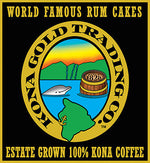Kona coffee is some of the most sought after coffee in the world. This premium coffee receives this accolade because of the unique circumstances in which it grows and is harvested. To understand why, here's a breakdown of the life cycle of a Kona coffee tree from seed to harvest.
Where is Kona Coffee Grown?
To be considered authentic Kona coffee, the trees must be grown in the Kona district, a small region along on the western coast of the Big Island of Hawaii. Only beans grown in this region can be packaged with a label of “100% Kona coffee.” The Kona coffee tree life cycle differs from other Hawaiian coffee trees because it is cultivated on mountain slopes of Hualalai and Mauna Loa volcanoes, and benefits from the unique growing conditions there.
Kona coffee was brought to the region in the 1800s and continues to grow on this less than 30 mile stretch of land. The climate and soil here make for ideal conditions for the Kona coffee tree to flourish. The perfect growing conditions are reached through the sunny mornings, rainy afternoons, mild nights and nutrient rich volcanic soil.
Kona Coffee Tree Life Cycle
A Kona coffee tree’s seeds are housed inside the fruit of the tree, referred to as the "cherry." Typically, the cherry contains two seeds, or beans. Occasionally a rare single seed occurs, known as a peaberry. The seeds have a protective coat, or silver skin, which is covered by another layer known as the parchment. As the cherry ripens it turns from green to yellow, then orange, and will be picked when they reach a deep red.
Germination of a coffee bean is a slow process. In warm weather it can take 50 to 60 days for a seed to germinate and emerge from the soil, and the process takes up to 90 days in cooler climates. Fortunately, Kona is on the leeward side of the island, making it warmer and drier. The average temperature ranges from 70 to 80 degrees Fahrenheit.
After one year of growth, a seedling will stand about one and a half to two feet tall. In these early stages of growth, the juvenile plants require protection from high humidity and direct sunlight.
It takes about three years for Kona seedlings to reach maturity. When they begin reproducing, small groupings of fragrant white blossoms will appear. These sweet-smelling flowers are known locally as “Kona snow.” Once the flowers are pollinated, cherries will appear within 15 weeks. It will take another seven to 11 months for the cherries to fully ripen.
A mature Kona coffee tree will stand at approximately 15 feet tall. They are capable of producing berries for 40-60 years.













